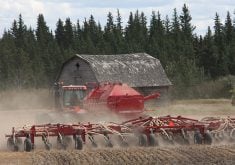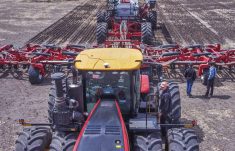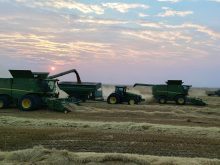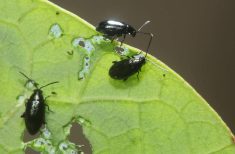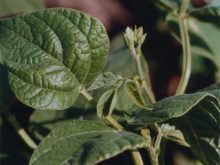WINNIPEG — The science around canola and seeding dates can be confusing.
Plant early in May to maximize yield or seed later to avoid flea beetles, frost and re-seeding costs?
“(There’s) always lots of questions (about seeding date),” said Chris Holzapfel, research manager with the Indian Head Agricultural Research Foundation.
“It can be a difficult one.”
In December, Holzapfel spoke at the Manitoba Agronomists Conference, where he shared data from IHARF trials on seeding dates for canola.
The data shows that canola seeded in early May takes, on average, about 16 days to emerge. Canola seeded in mid to late May required 10 to 12 days.
Read Also

New program aims to support plant-based exports to Asia
Understanding the preferences of consumers in Taiwan and how they differ from Indonesia or Malaysia isn’t easy for a small company in Saskatchewan.
In some cases, the early seeded canola sat in the ground for 20 days before emerging. Late seeded canola sometimes emerged in eight days.
Plus, earlier seeded canola resulted in fewer plants per sq. foot, based on the IHARF trials.
With more time in the ground and lower plant densities, early-seeded canola should have some disadvantages.
However, IHARF data indicates that early-seeded canola in Saskatchewan at Indian Head and Swift Current consistently had higher yields.
The trials were repeated from 2014-17. The results show that late-seeded canola (late May-early June) produced lower yields than canola seeded in the middle of May or the first 10 days of May:
- Over the eight years of trials (four at Swift Current and four at Indian Head), canola seeded in the earliest window of time yielded 40 bushels per acre on average.
- Despite popping out of the ground more rapidly and having more plants per sq. foot, the canola seeded in late May and early June yielded about six or seven bu. less on average.
“When it comes to yield potential and really giving that crop an opportunity to finish strong, early seeding is desirable,” Holzapfel said.
“Maybe the reason we don’t see the yield loss is that early seeded canola has more time to grow vegetatively, more time to branch out. It’s often flowering late June … before we get that hot weather… and the drought stress starts to kick in.”
Thom Weir, a professional agrologist from Yorkton, Sask., has reviewed scientific literature and data from provincial crop insurers on the Prairies, which confirms that the IHARF data on seeding dates and yield is accurate.
“Late planting costs you 1.5 to two percent of yield per day that is delayed from the optimum date in your area,” Weir wrote in The Western Producer in March 2023.
”I have tracked this using Environment Canada data, and in Saskatchewan, that date is around May 7 to May 10.”
The results from IHARF and crop insurance data looks clear — seed early to maximize yield.
However, some canola growers are delaying seeding in the spring to avoid flea beetles and minimize the risk of re-seeding.
Tyler Wist, a field crop entomologist with Agriculture Canada, said in 2023 that later seeding might be the better option for dealing with flea beetles.
Experts used to recommend early seeding, so the plants could get ahead of flea beetle pressure.
However, the flea beetle population has shifted since around 2012.
Striped flea beetles have become much more common across the Prairies. They usually emerge two weeks before crucifers, the other flea beetle that attacks canola seedlings.
So, the previous recommendation on early seeding is outdated.
“I wouldn’t say that anymore. I might even say, seed a little bit later,” Wist said.
“Why is that? Your ground is warmer, your plant comes up quicker. It takes up the insecticide better from the seed treatment. And it’s not sitting around … in a vulnerable stage (cotyledon stage).”
Another challenge with early-seeded canola is a spring frost. There can be nights in late May on the Prairies when the temperature dips to -3 or -4 C.
“It’s not uncommon. It’s May 25 and you get a pretty hard frost,” Holzapfel said.
Canola seeded on May 19 would be fine because the plant hasn’t popped out of the soil, but May 8 canola would take a hit.
Despite the risks of spring frost and flea beetles, the data tells Holzapfel that early seeding is better than late.
“Early seeding is generally advantageous, but we need to be prepared to manage that (crop),” he said.
“Just because it takes longer for the seed to get out of the ground doesn’t mean they can’t produce viable plants. You do need to be prepared to spray … those flea beetles with early seeding.”






